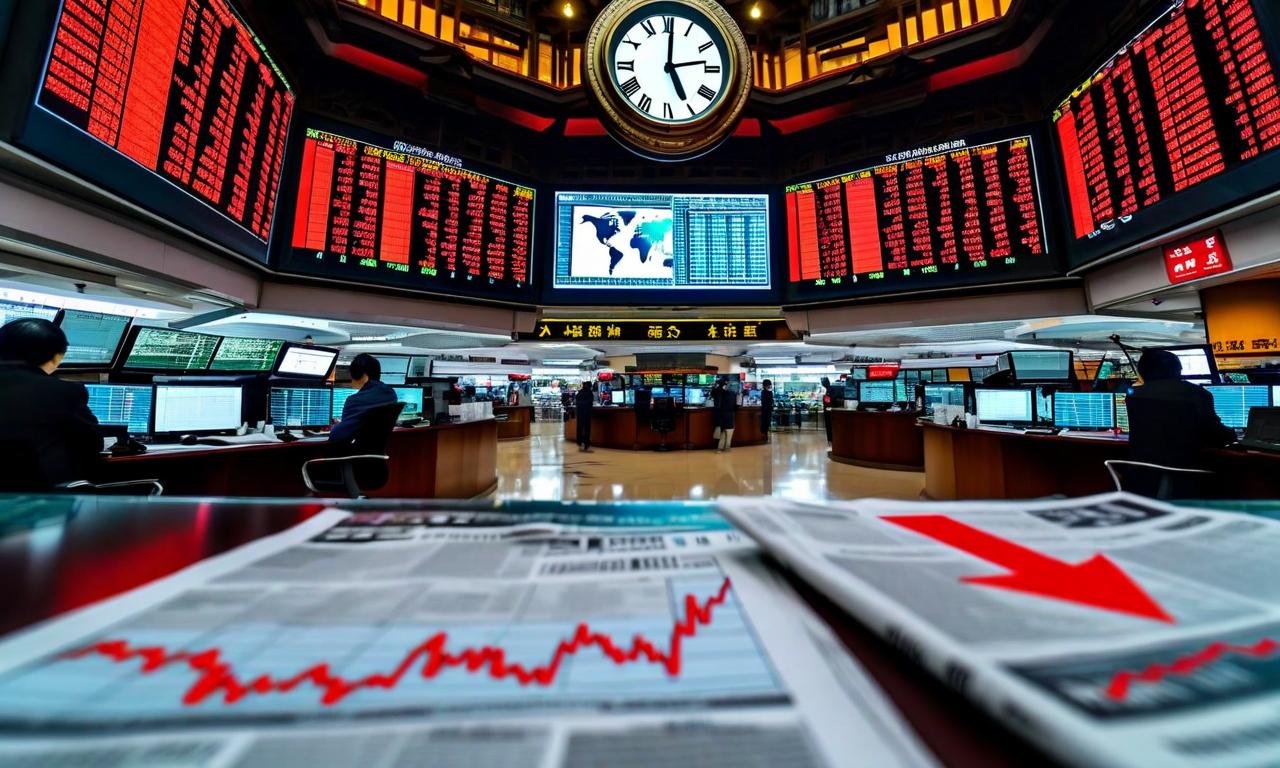Asian Markets Brace for Decline Amid U.S. Banking Sector Concerns
Asian stock markets are expected to open lower, following a slump on Wall Street due to renewed credit concerns in the U.S. banking sector. The downturn is primarily driven by reports of increasing bad loans at two U.S. regional banks, overshadowing positive sentiment in the technology and artificial intelligence sectors. This situation may lead to increased volatility in Asian markets, with potential sector-specific impacts and a shift towards safer assets.

*this image is generated using AI for illustrative purposes only.
Asian stock markets are poised for a downward trend following a slump on Wall Street, as renewed credit worries in the U.S. banking sector overshadow positive sentiment in the technology and artificial intelligence (AI) sectors.
U.S. Banking Concerns Spill Over to Asian Markets
The Asian markets are expected to open lower, mirroring the decline seen in U.S. stocks. This downturn is primarily attributed to growing concerns over the stability of regional banks in the United States. Reports of increasing bad loans at two U.S. regional banks have reignited worries about the overall health of the financial sector, casting a shadow over investor sentiment.
Tech and AI Sectors: A Silver Lining
Despite the broader market concerns, the technology and artificial intelligence sectors continue to show resilience. These industries have been a source of positive sentiment in recent times, driven by advancements and growing interest in AI technologies. However, the current banking sector issues appear to be overshadowing even these bright spots in the market.
Potential Impact on Asian Markets
The spillover effect from the U.S. markets may impact Asian stocks in the following ways:
- Increased Volatility: Investors may experience heightened market volatility as they reassess risk in light of the U.S. banking sector concerns.
- Sector-Specific Impacts: Financial stocks in Asia might face additional scrutiny, while tech stocks could see mixed reactions.
- Safe-Haven Flows: There might be a shift towards safer assets, potentially strengthening currencies like the Japanese Yen.
- Cautious Sentiment: Investors may adopt a more cautious approach, leading to potential sell-offs in riskier assets.
Outlook
While the immediate outlook appears challenging, it's important for investors to maintain a balanced perspective. The situation remains fluid, and market sentiments can shift based on new information or policy responses from regulators and central banks.
Investors are advised to stay informed about both global and local market developments, particularly any news related to the banking sector and potential contagion effects. As always, a diversified investment approach and careful risk management are crucial in navigating these market conditions.





























